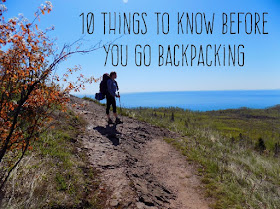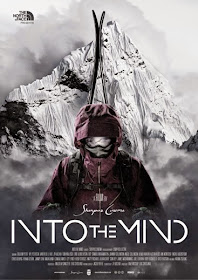
Hiking is the best way to spend a day. With so many nation wide trails, parks, and beautiful scenery built by mother nature there are many ways to get into the woods. With movies like Wild and A Walk in the Woods there are many newly inspired hikers on the trails. Creeks to Peaks is always excited to see a new face on the trail but want to prepare all the new found backwoods trekkers for what the trail can offer... and take.
Backpacking far from roads and help is no joke, we want to make sure you're ready for a hike and have fun while doing it. Being safe and equipped is always in style.
Minnesota can be ever changing between weather and terrain so read below for 10 tips to help you navigate the great state of the North.
1. Prepare for all weather conditions
It's Minnesota. Weather conditions can change in an instant and it's easy to assume that the weather predictions will be accurate, however, you will soon find they're seldom correct. You'll encounter a wide range of temperatures throughout the day. Even in the hottest parts of the summer you'll still have cool evenings that bring a refreshing end to a wonderful day in the woods!
April - May: Be ready for snow at any point. There may still be tons of it left on the trail and it can be dangerous when hiking on cliff sides. The snow is known to "rot" (melt underneath with the appearance of being a few feet thick) this can trap your leg easily or create a semi avalanche depending on how the snow pack is. The mornings are chilly with temps in the 20s-40s and usually offer frost covered grounds. The afternoons heat up and you can expect a lovely day with temps in the 50s -70s with brilliant sun or a passing shower (that could mean snow shower). The evenings drop off in temperatures quickly as does the sun. Be ready to hunker down and embrace the temps that can range below freezing. Although weather is ever changing it's still a wonderful time to experience the trail!
June - July: In early June you'll still see some of the above temps but not as extreme. Through both these months you'll see beautiful days with highs in the 70's and evenings in the 40s-50s. This is prime hiking weather but you will encounter more than a few rain showers. Read the tips below to prepare for rain and you'll be just fine.
August - October: These months jump all over the place on temperature. One day you'll have a high of 80 and the next it will be a cool 62 degrees with a passing shower. Just pack clothing accordingly and make sure you're ready in October for snow to fly.
In all months on the trail you'll want to make sure you have a solid warming layer, rain gear, and pants that can be multi-use for cold nights or buggy days.
2. Own Decent Rain Gear
A monsoon is known to pop up every few days along the shore. The lake effect downpours can last for hours or even days. There's plenty of coverage along the trail in deep forests but if you choose to hike through the rain be prepared for a wet trip.
You need to have a solid rain shell, pack cover, and serious waterproof shoes. You won't be just dealing with water leaking into your boots but add in mud and trail waterfalls on the uphills and you'll be in some serious trouble (see Know the Shuttle Times for my experience). Think of the hardest downpour you've ever seen. They usually last for 5-10 minutes before letting up, right? On the North Shore that can last for hours at a time. With Lake Superior giving off a volume of water it's similar to what you can see happen in ocean towns.
It's easy to overlook packing a bulky jacket or not wanting to lug an extra pair of socks on the trail but your feet and your sanity will be happy you did if you get caught in a downpour.
Don't ever let rain be a deterrent from hiking on the beautiful Superior Hiking Trail. One day of rain won't ruin a once in a lifetime experience.
 |
| Notice wet trails - if you have good gear you'll be fine |
3. Waterproof All Your Gear
Said above monsoon can easily soak through your pack. You'll want to make sure the important things are secured in individual plastic bags. Using gallon size zip-lock bags is the easiest way to secure that your phone won't be floating in a pool inside your pack. Pack covers are great but most are water resistant at best (and expensive). Honestly, a garbage bag covering your pack might work better than a costly pack cover.
Another wonderful thing about using air tight bags is you can get your clothes in them and squeeze the air out. You'll notice the size of your clothing goes down and it's easier to find everything in your pack.
Despite grumblings from Blake, Maurina insisted on bringing with a small tarp that packed down to nothing. This was their saving grace after their rain fly ripped and it provided shelter when packing up gear. Yes, an extra bulk that most hikers would not endure but it saved our butts more than once. It's an easy safety net of a waterproof system.
 |
| Tarp that saved our butts after our rain fly ripped |
4. Know the Shuttle Times
There are a few shuttles that run up and down the length of the SHT. These are useful for getting you up and down the North Shore coast and offering a cost effective way to not have to drive the entire thing.
The shuttle literally saved our lives one time when we had to get off the trail in an emergency. It only came from knowing when the shuttle would make an appearance at what trail head. Cell reception is notoriously spotty along the trail especially the farther north you go. Bring a schedule with and the phone number of the service. This is advised if not necessary.
We had encountered multiple days of sheer downpour on one of our first long distance hikes. Our gear was less than top of line and our knowledge of waterproofing was slim. This caused Maurina to have her boots soak through to the core and she hiked 10+ miles completely saturated. We paused at a trail head parking lot trying to dry out under the tarp we had packed with. Once we stopped moving Maurina went into hypothermia. Being a Lifeguard and having 10 years of water safety, being a swim instructor, and running an entire aquatics facility, she knew what what happening and the only way to stop it. We had to get out of the rain and into dry clothes.
Lucky for us we knew the shuttle would be making a stop at that exact parking lot within a few hours. We got one brief choppy call out to the shuttle service letting them know we were stranded and sat and waited. We cooked a hot meal and did our best to stay huddled under the tarp.
We were not alone in getting off the trail that day as the shuttle made many unexpected stops to rescue stranded hikers who were also struggling with the cold rain. It's important to know your options in an emergency and to have the proper gear!
5. Bring Your Own Tinder for Fire Starting
With all this talk of rain let's talk about campfires. Each campsite set by the SHT has a wonderful fire ring, benches, and set tent pads. As a word of caution make sure to stay in your campsite and don't go packing down areas around the campsite that are meant to stay wild. These resources are invaluable to the survival of the SHT and the wilderness that surrounds it.
There are more than a few felled trees in the woods that offer up great firewood. Make sure to only use trees and branches that are already dead and that you are not taking anything away from the forest. You can walk up and down the trail and find piles of good wood to use without removing anything that should stay put.
With so much rain up on the North Shore it can sometimes be hard to find wood that's not soaked through and especially dry tinder to light wet logs. A simple, light, and cost effective way to guarantee a roaring fire is to pack in your own tinder (fire starters not the app!).
We use cotton balls dipped in Vaseline for our tinder. One cotton ball will ignite an entire pile of leaves and sticks in a matter of seconds. It helps get a great base of hot coals going to keep those wet logs steaming until they catch fire.
Another cheap and solid way is to stuff an empty toilet paper roll with dryer lint. Sounds weird but that sucker will light up in no time and will provide a searing hot way to get a fire going.
It's also advised to know the different ways to light a fire. The Tepee vs Log Cabin debate seems silly but could change the outcome of a fire depending on the type of wood you can find and how wet it is. Do your research.
6. Bring a Decent Camera
This seems obvious but many people have started to rely on their phones for snapping photos. A water damaged phone is lost to the technology gods but a water damaged camera can still have the SIM card saved. Personal experience applies.
The SHT has sweeping vistas and enormous rolling valleys and cliffs that a cell phone won't do justice for. You'll want to immortalize your trip through a flawless lens and show how brilliant the lake looks from the ridgeline.
Also, be honest, how many pictures from your cell phone have you ever printed? These pictures are ones you'll want to keep!

 |
| You'd hate to miss the opportune moment because your phone died |
7. Tick Season
You'll always encounter bugs in the woods no matter what part of the country you're in. Minnesota has a wide variety of seasons compared to our more southern states and with that comes seasons of bugs. Ticks are a nuisance but are easily warded off. They tend to pop up between mid May - mid June.
Simply spray a coat of permethrin on your clothes and gear to keep those buggers away. You can find this at any sporting goods store and it runs rather cheap. We have been in the woods for days on end an have never had an issue after we coated ourselves in it. Nontoxic and only offensive to ticks it will be your saving grace in the woods.
Another way to securely ward them off is wearing a thin pair of pantyhose under your hiking pants. It sounds hilarious but it actually works. Ticks can't get through the thin netting and will crawl around aimlessly or get off their free ride and find someone else. The same goes for wearing thin dress socks that go up your shins. They will hang onto these instead of your skin.
As always, check yourself often and routinely check your "hot spots" (ankles, groin, hairline). This will eliminate finding an unwanted guest after your hike.
8. Know your water sources
Water sources change quickly along with the changing seasons. Research the route you're taking and know when you'll be crossing true water sources in the forms of creeks, rivers, and lakes. The later in the year you go, the dryer the sources will be.
The Spring offers wonders in bountiful springs, creeks, and running water straight from an ice shelf but the mud and cold nights may deter the average hiker. The late season from mid August through October will offer a wider range of temperatures but will also show you what the guide book means by "unreliable water sources". We came across streams that were more of a spittle than a flowing creek. Be prepared to carry extra water through the dry season but you will see changing foliage and a bug free experience.

 |
| It's hard to see but this stream is melting directly out of a snow pack. It was freezing cold water and hit the spot on a warm early June day. |
9. Know How Many Tent Pads Are Available
The SHT has an awesome layout and is well maintained. Most trails don't have set backwoods campsites but the SHT has campsites every 3 -10 miles on the trail. Inside the guide book (purchase here) they have a very detailed list of what campsites are available per section and inside that description it lists how many tent pads are available.
Below is an example of how one of the campsites is written in the guide book.
▲ Crow Creek Valley Campsite
---------------------------------------
Tent Pads: 5
Water: From small stream, unreliable in dry conditions
Setting: In maple woods on small tributary of Crow Creek
Next campsite: 3.4 Miles
It gives you the information of how many tent spaces are there, where to get water, what type of setting the campsite is in, and how far until the next campsite.
A word of caution: when traveling with large groups you need to be courteous to other solo or small group hikers. Since tent space is limited make sure to share. Also, if you have a large group you may find it difficult to fit into certain sites. Plan accordingly and arrive to sites early so that you don't have to hike an extra 3 -5 miles late in the day due to sites being full.

 |
| Example of a campsite - Egg Lake - includes benches, fire ring, and tent pads |
10. Know Your Carry In - Carry Out Rules
There are purists who will pack out everything they bring to a site... everything. The SHT has rendered this by providing back woods latrines for the use of hikers. That being said the urge doesn't always strike when you're conveniently at a campsite. Make sure you know what to carry out with you.
We've seen an uptick in the amount of trash left not only in campsites but along the trail as well. We would hate to see the beautiful trail tainted because a couple knuckleheads left their wrappers at a campsite.
IF YOU PACK IT IN PACK IT OUT
Also, if you see wrappers or trash in sites - photograph it, notify the trail office, and pack any of it out that you can. This will help the trail workers who have enough on their plate as it is.
______________________________________________________
The Superior Hiking Trail has hundreds of miles of wilderness all packed along the shore of Lake Superior. It offers a taste of true wilderness while showing off the wide variety of terrain Minnesota has. This trail is a must experience and has so much to offer in ways of views, camping options, state parks, and fauna.
A perfect place to practice for a longer thru-hike, take a weekend trip, or get your feet wet as a first time hiker. With a strong hiker community and Minnesota-nice always willing to offer a hand, you'll always find yourself welcome in the Great North Woods.

 |
| You can purchase this 8 x 10 Printable Here |
See you on the Trail!
Go Breathe the Wild Air
- Creeks to Peaks







































































